Alberta 
Alberta to pause new renewable energy permits while reviewing policies
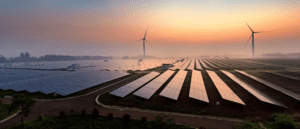 Starting on August 3, 2023, the Alberta Utilities Commission (AUC) paused approvals for new renewable electricity generation projects over one megawatt until February 29, 2024. During this period, the AUC will review the policies and procedures for the development of renewable electricity generation. The AUC inquiry will include reviewing the use of agricultural and public lands for wind and solar projects, land reclamation, and the role that municipal governments play in land selection for these developments. According to the government, its goal in this process is to move forward with future renewable projects at a pace that is conducive to business while maintaining responsible environmental stewardship and preserving Alberta’s electricity supply. Minister of Affordability and Utilities Nathan Neudorf, who also serves as the MLA for Lethbridge-East, said he wants to ensure that future growth is balanced with responsible development.
Starting on August 3, 2023, the Alberta Utilities Commission (AUC) paused approvals for new renewable electricity generation projects over one megawatt until February 29, 2024. During this period, the AUC will review the policies and procedures for the development of renewable electricity generation. The AUC inquiry will include reviewing the use of agricultural and public lands for wind and solar projects, land reclamation, and the role that municipal governments play in land selection for these developments. According to the government, its goal in this process is to move forward with future renewable projects at a pace that is conducive to business while maintaining responsible environmental stewardship and preserving Alberta’s electricity supply. Minister of Affordability and Utilities Nathan Neudorf, who also serves as the MLA for Lethbridge-East, said he wants to ensure that future growth is balanced with responsible development.
Source: Lethbridge News Now
Electricity Prices for Alberta
The Alberta power pool price averaged 18.680 cents per kWh in August 2023. This price is 3.180 cents higher than last month’s average of 15.500 cents. The pool price has averaged 17.942 cents per kWh over the last 12 months.
As of September 1, 2023, the forward market was predicting electricity prices for the calendar years of 2023, 2024, 2025, 2026, 2027, and 2028. These prices are 14.800, 8.818, 6.931, 6.950, 6.950, and 6.950 cents per kWh respectively.
Gas Prices for Alberta
Direct Energy’s gas rate for August 2023 was $3.368 per GJ in Alberta. The September 2023 rate has been set at $2.724 per GJ. Alberta gas prices have averaged $3.781 per GJ over the last 12 months.
As of September 1, 2023, the forward market predicted gas prices for the calendar years of 2023, 2024, 2025, 2026, and 2027. These prices are 2.90, 3.11, 3.65, 3.86, and 3.79 cents per GJ respectively.
British Columbia 
LNG
The Canadian Association of Petroleum Producers is promoting B.C. as one of the “most important energy export hubs in the world.” That’s largely because of the province’s new liquefied natural gas, or LNG, industry. LNG is natural gas that has been cooled to below 160 C, compressed and turned into liquid for transport in ocean tankers as long as two football fields. The launch of the LNG export industry ushers in the biggest fossil fuel boom in B.C.’s history. It’s taking place despite a dire warning from the Intergovernmental Panel on Climate Change that rising greenhouse gas emissions are pushing the world to the brink of disaster.
The panel says climate breakdown can only be avoided through immediate and drastic action. Canada’s first three liquefied natural gas export projects, approved by B.C.’s NDP government, will ship fracked gas to Asian markets. LNG Canada — a consortium of multinational oil and gas companies, including Shell and Petronas — will send gas to Kitimat through the Coastal GasLink pipeline that crosses contested Wet’suwet’en territory. Natural gas used to produce LNG is extracted from deposits in the province’s northeast using a process called hydraulic fracturing, or fracking. Cooling fracked gas into a liquid for export requires energy-intensive compression units that run around the clock.
The first phase of the project will generate 9.6 mega-tonnes of carbon per year by 2050, according to the Pembina Institute. The second phase of the LNG Canada project, approved by the B.C. government and awaiting a final investment decision, would double greenhouse gas emissions from the terminal, making it difficult for B.C. to meet its climate targets. Critics say there are no guarantees LNG will replace coal as a power source and that boosting supply could delay urgently needed transitions to renewable energy.
Source: The Narwhal
Ontario 
OPG working to deploy SMR fleet to help power Ontario’s clean energy future
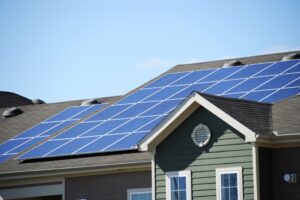 Building on OPG’s (Ontario Power Generation) work to advance North America’s first commercial, grid-scale Small Modular Reactor (SMR), the Ontario government announced that it will work with OPG to commence planning and licensing for three additional SMRs, for a total of four BWRX-300 reactors at the Darlington new nuclear site. Pending regulatory approvals, the completion of these new units in the mid-2030s would provide an additional 1,200 megawatts of new, clean, reliable electricity, or enough to power about 1.2 million homes. This would advance Ontario’s net-zero goals, support the province’s growing economy, and help meet the expected increased demand from electrification.
Building on OPG’s (Ontario Power Generation) work to advance North America’s first commercial, grid-scale Small Modular Reactor (SMR), the Ontario government announced that it will work with OPG to commence planning and licensing for three additional SMRs, for a total of four BWRX-300 reactors at the Darlington new nuclear site. Pending regulatory approvals, the completion of these new units in the mid-2030s would provide an additional 1,200 megawatts of new, clean, reliable electricity, or enough to power about 1.2 million homes. This would advance Ontario’s net-zero goals, support the province’s growing economy, and help meet the expected increased demand from electrification.
Due to their size, SMRs can provide a lot of clean power from a small footprint, lessening impact to the environment and capital costs. Developing a fleet of SMRs at the Darlington site will help strengthen and grow Ontario’s strong nuclear supply chain and position the province’s companies to become SMR specialists. This knowledge could then be exported around the world to help other jurisdictions deploy similar technology to decarbonize their economies.
Source: Ontario Power Generation
Saskatchewan 
Sask. premier says federal net-zero electricity targets would double power rates, experts dispute that
Premier Scott Moe said the federal government’s proposed clean energy regulations are “unachievable” for the province and would “at least double the power rates,” but experts dispute those claims. Federal Environment Minister Steven Guilbeault released Ottawa’s proposed Clean Electricity Rules. They are intended to pave the way to a net-zero power grid — not a fossil fuel-free grid — in Canada by 2035. Saskatchewan officials have said the targets will be impossible to meet.
A SaskPower spokesperson said the province will “greatly reduce GHG emissions as we approach 2035, but achieving net-zero isn’t feasible technically, logistically, or financially. Brett Dolter, assistant professor in the department of economics at University of Regina, said the transition is feasible for the province, especially because the new regulations don’t mean the end of natural gas power generation. The government can build new plants with Carbon Capture and Storage (CCS) infrastructure attached to them while the old ones can run until the end of their life, Dolter said. By the proposed regulations, CCS infrastructure will be mandatory after January 2025.
Source: CBC
Manitoba 
Despite efforts to appear clean and green, Manitoba’s emissions strategy remains hazy
 Whenever Premier Heather Stefanson speaks about Manitoba’s role in the global effort to control greenhouse gas emissions and mitigate the effects of climate change, she is quick to point out how little this province relies on fossil fuels right now for its energy needs, “Manitoba produces 97 per cent clean, green, hydroelectric power.” That statement is accurate when it comes to energy production. There are four Manitoba communities that rely primarily on petroleum products to generate electricity: Brochet, Lac Brochet, Tadoule Lake and Shamattawa, all of them Indigenous communities in northern Manitoba.
Whenever Premier Heather Stefanson speaks about Manitoba’s role in the global effort to control greenhouse gas emissions and mitigate the effects of climate change, she is quick to point out how little this province relies on fossil fuels right now for its energy needs, “Manitoba produces 97 per cent clean, green, hydroelectric power.” That statement is accurate when it comes to energy production. There are four Manitoba communities that rely primarily on petroleum products to generate electricity: Brochet, Lac Brochet, Tadoule Lake and Shamattawa, all of them Indigenous communities in northern Manitoba.
The province has decided it isn’t feasible to eliminate this handful of dirty energy facilities. In an “energy roadmap” issued in July, the province declared it wouldn’t be worth it to push the clean-power needle from 97 per cent green to 100 per cent. There is also, however, little ambition in Manitoba to reduce the demand for natural gas, diesel fuel and gasoline on the consumer side, let alone the actual use of petroleum products, and increase the use of cleaner energy. This province may be 97 per cent clean when it comes to making energy but are far less clean when it comes to using it.
Source: CBC
New Brunswick 
New N.B. Power plan shows ‘considerable uncertainty’ on net-zero emissions
N.B. Power is continuing to grapple with major uncertainty as it lays out its plan to decarbonize its electricity grid in time for a 2035 deadline. A mix of wind power, a costly upgrade to the Mactaquac Dam, an extension to the life of its Bayside gas-fired plant and small modular reactors are all essential, the utility says in its latest three-year outlook. That forecast has become increasingly complicated, given the utility’s huge debt, increasingly stringent federal emissions-reduction requirements, and the looming need to shut down or extend several major power plants.
The plan shows which way N.B. Power is leaning toward small modular nuclear reactors and away from a costly linking of five provincial power grids known as the Atlantic Loop. The plan has no promotion of the economic upside of the Atlantic Loop, which would connect the grids in the four Atlantic provinces and Quebec to allow for more sharing of hydroelectric power from Quebec and Labrador. The scramble for non-emitting electricity generation is driven by the federal government’s climate targets, which include net-zero greenhouse gas emissions by 2050 and net-zero electricity generation even sooner — by 2035.
Source: CBC
Prince Edward Island 
New wind farm coming to central P.E.I. in partnership with Lennox Island
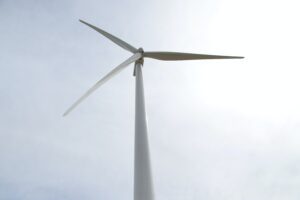 The project is a partnership between Lennox Island First Nation and Natural Forces – a power producer that partners with local communities on renewable energy projects. The community has worked with Natural Forces before, specifically on an energy opportunity assessment to look at Lennox Island’s assets and the ways they could utilize renewable energy. Located just south of Middleton and southwest of Kinkora, the wind farm will consist of three turbines, which will power between 12 and 18 megawatts of energy, producing enough energy to power around 4,000 local homes. Work on the site is expected to begin in late 2024, with the turbines up and running by the end of 2025.
The project is a partnership between Lennox Island First Nation and Natural Forces – a power producer that partners with local communities on renewable energy projects. The community has worked with Natural Forces before, specifically on an energy opportunity assessment to look at Lennox Island’s assets and the ways they could utilize renewable energy. Located just south of Middleton and southwest of Kinkora, the wind farm will consist of three turbines, which will power between 12 and 18 megawatts of energy, producing enough energy to power around 4,000 local homes. Work on the site is expected to begin in late 2024, with the turbines up and running by the end of 2025.
Source: Saltwire
Québec
Closing the door on nuclear power ‘would be irresponsible,’ says Quebec energy minister
Quebec Energy Minister Pierre Fitzgibbon said Monday he agrees with Hydro-Québec’s decision to study a possible reopening of the province’s only nuclear power plant, saying as Quebec moves away from fossil fuels, all alternative sources of energy should be studied. It would be “irresponsible,” he said, to reject nuclear power outright, adding that any new energy projects should be “socially acceptable and economically profitable.” Fitzgibbon and other officials have warned that the demand for electricity from companies seeking to launch industrial projects in the province exceeds Hydro-Québec’s current capacity.
The minister has also suggested that Quebecers will need to reduce their energy consumption, but the government hasn’t released details on how that goal will be achieved. He said in order for Quebec to successfully transition away from fossil fuels, the province will need to increase its renewable energy capacity and residents will need to change the way they consume energy. He also said the number of cars on the road has to be cut in half — and that the cars that remain should be electric, adding, “we need to capture the carbon that already exists, in the sea or in the sky, and sequester it.”
Source: CTV News Montreal
Newfoundland and Labrador 
Guilbeault not concerned by new Equinor exploration off of Newfoundland and Labrador
Federal Climate Change Minister Steven Guilbeault appeared to tacitly endorse expanded exploration of the Bay du Nord offshore oil field by Norwegian oil giant Equinor. Equinor Canada Ltd. has awarded a contract for the Hercules semi-submersible drilling rig to conduct an exploration drilling program offshore Newfoundland in 2024. Guilbeault said the government will propose new regulations in the fall that will require emissions at production sites to be capped and phased out. He defended Ottawa’s decision in April to approve the controversial Bay du Nord megaproject despite pushback from environmentalists and climatologists. The field could produce as many as a billion barrels of oil over its lifespan, although the company later announced it was putting development on hold for up to three years.
Source: Saltwire
Nova Scotia 
Nova Scotia’s potential path to net zero
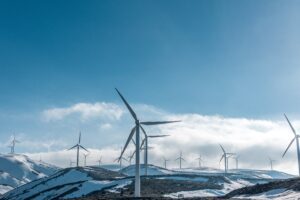 As Ottawa maps out how to achieve a net-zero grid by 2035, Nova Scotia believes it’s already moving in the right direction. Nova Scotia is weaning itself off coal and has pledged to reach 80 per cent renewables by 2030. Gradually, more renewables are being added to the grid. But the Atlantic Loop, which had the potential to provide Nova Scotia and New Brunswick with hydroelectricity from Quebec and Newfoundland and Labrador, is no longer the Houston government’s preferred path. Instead, Tory Rushton, Nova Scotia’s Minister of Natural Resources and Renewables, is talking about new wind projects and an intertie between Nova Scotia and New Brunswick — a grid system that would connect the two provinces. In order to meet Ottawa’s targets Nova Scotia has to reduce its energy intensity down to 30 tonnes per gigawatt hour.
As Ottawa maps out how to achieve a net-zero grid by 2035, Nova Scotia believes it’s already moving in the right direction. Nova Scotia is weaning itself off coal and has pledged to reach 80 per cent renewables by 2030. Gradually, more renewables are being added to the grid. But the Atlantic Loop, which had the potential to provide Nova Scotia and New Brunswick with hydroelectricity from Quebec and Newfoundland and Labrador, is no longer the Houston government’s preferred path. Instead, Tory Rushton, Nova Scotia’s Minister of Natural Resources and Renewables, is talking about new wind projects and an intertie between Nova Scotia and New Brunswick — a grid system that would connect the two provinces. In order to meet Ottawa’s targets Nova Scotia has to reduce its energy intensity down to 30 tonnes per gigawatt hour.
Source: CTV News Atlantic
Nunavut 
Nunavut’s Energy Future Lacking in Government of Canada’s ‘Powering Canada Forward’ Report
The Government of Canada’s ‘Powering Canada Forward’ report released earlier this month demonstrates a continued absence of concrete commitments and forward-looking strategies for Nunavut, Nukik Corporation (Nukik) announced. This report, branded as the Federal Government’s blueprint for progress in the electricity sector, addresses Nunavut merely in passing as a data point and fails to provide a comprehensive roadmap that would ensure equitable access to resources and initiatives propelling the clean energy transition in the Territory, a priority enjoyed however by the rest of the nation.
As a 100 per cent Inuit-owned organization developing the Kivalliq Hydro-Fibre Link (KHFL), Nukik believes that the infrastructure gap impacting Inuit and Nunavummiut must be addressed. The KHFL is designed to begin addressing that gap by bringing renewable energy and fibre-optic internet to the Kivalliq region of Nunavut. It is the only major infrastructure project currently at the development stage that will support Nunavut in transitioning off diesel generation with dispatchable, baseload electricity and meet Canada’s 2030 GHG emissions reduction target for the Territory.
Source: Nukik Corporation
Northwest Territories 
Diavik will build large solar plant to power it through closure
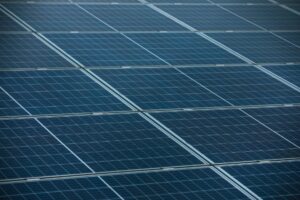 Rio Tinto will build a solar plant at its Diavik diamond mine to help power the work needed to close down the facility. Diavik, a big slice of the NWT’s economy since it opened in 2003, now expects to end production in 2026. Rio Tinto said more than 6,600 solar panels will be installed at Diavik. Work will begin in the coming weeks and the company hopes the solar plant will be fully operational in the first half of 2024 and will provide up to 4.200 MWh of electricity. “The solar power plant will provide up to 25 percent of Diavik’s electricity during closure work that will run until 2029,” the company stated in a press release.
Rio Tinto will build a solar plant at its Diavik diamond mine to help power the work needed to close down the facility. Diavik, a big slice of the NWT’s economy since it opened in 2003, now expects to end production in 2026. Rio Tinto said more than 6,600 solar panels will be installed at Diavik. Work will begin in the coming weeks and the company hopes the solar plant will be fully operational in the first half of 2024 and will provide up to 4.200 MWh of electricity. “The solar power plant will provide up to 25 percent of Diavik’s electricity during closure work that will run until 2029,” the company stated in a press release.
Diavik president Angela Bigg said the solar panel was decided upon after the mine could not find a vendor to supply a large-enough battery that would work in the cold. Diavik already has the largest wind turbine facility in the North, a system of four 2.3-megawatt turbines that the mine has previously said saves around $5 million a year in power costs. The fate of the solar plant after 2029 is unclear.
Source: Cabin Radio
Yukon 
‘Nation-building moment’: Yukon eyes connection to B.C. electricity grid
Yukon’s Minister of Energy, Mines and Resources John Streicker says Canada’s push for more green energy and a net-zero electricity grid should spark renewed interest in connecting the territory’s power to British Columbia. He says linking the territory’s power grid to the south would help with the national move to renewable energy, support the mineral extraction required for green projects, and improve northern energy and Arctic security. The idea of a link, originally proposed to span 763 kilometres between Whitehorse and Iskut, B.C., was first floated in 2016 but sat on the shelf after a viability study put the price tag at as much as $1.7 billion. Canada’s grid is already nearly 85-per-cent clean, but demand is expected to double by 2050 as things such as cars, buses and trains become electric, and homes and buildings switch away from fossil-fuel heating sources.
In Yukon, all but four communities are connected to the same electricity network, with about 93 per cent of electricity generated by hydro plants and wind and the remainder from diesel and liquefied natural gas. As with the rest of the country, the territory’s need for electricity is growing as its population expands and people have more interest in greener technology, Mr. Streicker said, adding that connecting to B.C. would also help stabilize the system when new mines come on and off the grid. The territories are often excluded when it comes to research on the future of Canada’s electricity grid.
Source: The Globe and Mail